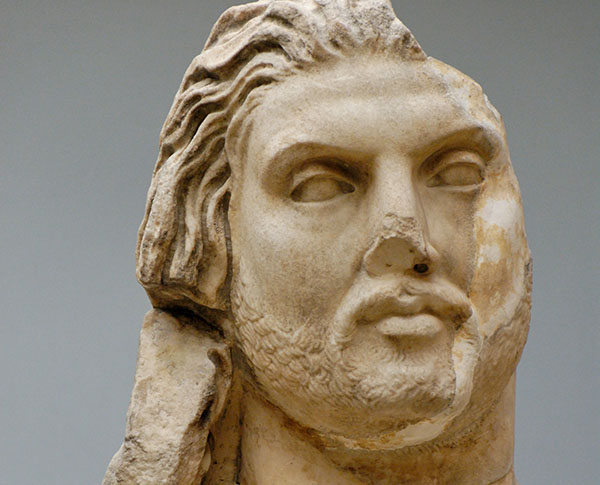Maussollos (377-353 BC) had such a memorable tomb that the word Mausoleum has since been used to describe any monument with a burial chamber.
No expense was spared for the tomb of Maussollos, which was completed by Artemisia, his supportive wife who was also his sister. Maussollos had made Halicarnassus (modern Bodrum on the Aegean coast of Turkey) his capital city, which he built it into a prosperous, well-defended port. He was a satrap, or local governor, beholden to Persia, and his tomb, overlooking the city, took its inspiration from other great sepulchres in Asia, to which was added the fine art of the Greeks.
A square, marble-clad box rose to a colonnaded, temple-like storey, and a stepped pyramid roof. At its summit, at around 40 metres (125ft) was a quadriga, a chariot with four horses, driven by colossal statues of Maussollos and Artemisia. Greek artists were brought in to decorate the building with bas-reliefs depicting mythological battles and human and animal sculptures.
Famous for a few centuries, the building disappeared beneath the ravages of war, earthquake and plunder, but it was not forgotten. It had been included in the list of Seven Wonders, compiled by classical writers, and been described by Pliny in his Naturalis Historia (c.AD78). Imaginative drawings had also been made of it in the 16th century as its final stones were being scavenged by the Knights Templar who were building a castle nearby.
Hawksmoor’s Bloomsbury Church
When the Grand Tour of Europe in the 18th century made the classical style fashionable, the Mausoleum was just one of the buildings from antiquity investigated by the leading British architects. Nicholas Hawksmoor, a protégé of Sir Christopher Wren, incorporated its design in the steeple of St George’s in Blomsbury, just north of the British Museum, which was consecrated in 1731. The pyramidal steps at its heights climb towards the figure of the then ruling monarch, George III, dressed in a Roman toga and hinting that he himself was the blessed St George.
The site of the Mausoleum remained unexplored until 1856 when the British archaeologist Charles Newton bought some of the land around where the Mausoleum was thought to be and began digging. Some of the sculptures he unearthed were acquired by the British Museum, for which the Mausoleum galleries were especially built. Larger-than-life statues and marble slabs with reliefs as well as fragments of the chariot can be seen today in the museum’s Room 21.
Modern Monuments
The discovery of the legendary building influenced a number of monumental memorials. Among the first was Grant’s Tomb in Morningside Heights, New York City. Designed by John H. Duncan and completed in 1897, this is the largest tomb in North America.
Other war memorials were designed on the Mausoleum principal:
- Soldiers and Sailors National Military Museum and Memorial, built in the Beaux Arts style in 1910
- The Indiana War Memorial, Indianapolis, and the national headquarters of the American Legion, dedicated in 1933.
- The Shrine of Remembrance in Melbourne, Australia, the state of Victoria’s largest war memorial, completed in 1954. Architects Philip Hudson and James Wardron had both been soldiers in World War I.
Civic Pride
Buildings that were not designed as memorials have also taken on the Mausoleum style. Though the Jefferson Memorial was one of John Russell Pope’s best known works, he chose to use the Maussoleum template for the 1915 House of the Temple in Washington. Headquarters of the Scottish Rite of Freemasonry, it has a large collection of Robert Burns material in what was the first public library in Washington. In 1928 the Los Angeles City Hall was topped with a Mausoleum.
The Mausoleum of Maussollos may have disappeared centuries ago but these buildings keep alive the memory of a powerful Persian satrap and his sibling wife.








